Pedestrian 34: A Testament to Elsewhere
Walking Richard W. DeKorte Park in the New Jersey Meadowlands.
I’m standing in the middle of Port Authority wondering where I went wrong.
The thermometer outside reads 90ºF, but the inside is even warmer despite the facility’s cavernous qualities. I check my phone. Three minutes. A bead of sweat rolls down the side of my face and explodes beside my shoe. My shirt is damp from sweat. Every which way I move, I’m surrounded by a sea of people all trying to get elsewhere. I stare into the fluorescent lights hanging from the ceiling and look for an answer. Two minutes.
Where the hell is the bus? The escalator ahead looks promising. I continue with a pink New Jersey Transit ticket in hand and descend further into the bowels of Port Authority. The numbers '“2-3-4” read at the end of the brick maze. My gate!
Classical music plays from the speakers. I check my watch once more. One minute past the hour. The lack of passengers raises my suspicions. Did I miss the bus? The attendant posted at the gate booth gives a nod. Yup. You missed your bus, alright.
I’m Alex Wolfe and this is Pedestrian, a newsletter on the observations, feelings, people, and experience of moving—often walking—through the built environment.
Today I’m off to Richard W. DeKorte Park in Lyndhurst, located in the heart of the New Jersey Meadowlands. The marshy expanse is located three miles west of New York City. Those living in the New York City metropolitan area have passed through one way or another—either on the New Jersey Turnpike, riding New Jersey Transit, or from an airplane flying in or out of Newark Liberty International Airport. Most residents think of the area as a barren wasteland or a pungent landfill home to the nation’s second-largest shopping mall appropriately named the American Dream, but a visit to the park is far from a visit to the dump.
The next bus won’t arrive for another hour, so I catch a train at nearby Penn Station. We depart on time and the car slowly rocks back and forth inside the darkness of the bore. After passing beneath the Hudson River, the train emerges from the ground and the sudden rush of sunlight blinds my eyes. The train wheels screech along the rails. My vision returns and I see grassy fields bound by heavy industry and exhaust. The asphalt of the turnpike boils. Further along, the haze of the Hudson River Palisades.
For decades this very land was plagued by irresponsible land management and careless pollution, destroying much of the ecosystem. Only a fragment of the Meadowlands remain presently. The destruction began centuries ago with the arrival of early Dutch settlers who drained the land with dikes and cut down native Atlantic Cedar in favor of salt hay farms. Towns and industry followed. As nearby populations grew, the Meadowlands became a convenient location for free-for-all garbage disposal. By the mid-1900s, the land was deemed unsalvageable, and by 1969, was home to nearly 1,900 acres of unregulated landfills, accepting 5,000 tons of garbage per day, for six days a week.
The abuse of the Meadowlands started to wane in the 1970s. Revitalization efforts began with the creation of the New Jersey Department of Environmental Protection and the New Jersey Meadowlands Commission (now the New Jersey Sports and Exposition Authority). In 1982, DeKorte Park was established.
The estuary park, dubbed an experimental park on a landfill, was one of the first landfill-to-parks projects in the United States. Set against the backdrop of the Manhattan skyline, the park features a landscaped capped landfill, six trails, and the Lyndhurst Nature Reserve, formally an illegal garbage island. All landfills within the Meadowlands district have ceased operations. The surrounding land is still polluted with waste, but slowly the ecosystem is regenerating and becoming an unlikely oasis of wetlands and wildlife.
I finally arrive at the park to find it’s busier than anticipated, although privacy is still afforded to those who walk its trails. I follow a wooden boardwalk resting above the murky water of the Hackensack River mudflats. Tall grass grows on either side of my shoulders—swaying to and fro—ushered by a gentle breeze. I watch an airplane descend from the sky until the horizon swallows its wings. Gulls fly in droves, gliding every which way they please while letting out possessed mews.
Every so often, I hear the sound of ambulance sirens or the roaring Jake break of an eighteen-wheeler barreling down the turnpike. A reminder I’m not far from the city hiding behind the reeds. Only in such placid settings do I realize I have grown so accustomed to living in such a noise-polluted city.
Meanwhile, thunderstorm clouds taunt from the west. Miles away, a faint sheet of rain covers nearby towns in a blanket of precipitation. My phone warns of rain in thirty minutes, although I’m unconvinced. Behind me, the Manhattan skyline, blue skies, and sunshine that makes my eyes water. Which way the weather goes makes no difference. I watch clouds of tens of miles in length drift across the sky.
My entire trip to DeKorte Park is in anticipation of the Saw Mill Creek Trail, the crown jewel of the park. The mile-long path stretches into the middle of the Hackensack River mud flats. The trail once functioned as a service road in the 1920s for the high-tension electrical towers looming overhead, but has since been converted for civilian use.
I am surprised to find fishermen casting their poles into the waters. They search for the undiscerning bites of striped bass and bluefish. Each side of the trail is bound by large boulders covered in mudflat muck produced by high tide. There they rest their belongings and wait.
The wind gives fair warning. I don’t have much time until meeting with the storm. Waves break on the surface of the boulders at ever-increasing speeds. The blue sky vanishes and glows orange from the angle of the sun. Could the water flood the trail, lift my body, and carry me all the way to the Bay of Newark? Excitement is not knowing.
The trail resumes. Despite the rain, intuition pulls me forward—all the assurance I will ever need. I squeeze through the unkempt brush. I’m beyond the limits of the trail and into the unknown. The trail tapers before a ford. My footsteps grow ever so intentional, so as not to fall into the water. I keep going until I can no longer continue. I’m left staring at a hill. Another giant inactive landfill.
I sit with my thoughts, trying to imagine what this land looked like before the completion of the New Jersey Turnpike, before the Statue of Liberty, long before the arrival of Dutch Settlers and European settlements centuries ago. Before heavy industry, unabashed development, excessive waste, and the need for landfills. The snap of lightning draws above, taking me from my imagination. Time to catch the bus on a schedule I never bothered to check.
I retrace my steps, through the grounds parking lot, down Disposal Road (a fitting name), and into the town of North Arlington. Modest homes rest on rolling hills, framing an epic view of the Manhattan skyline or an inactive landfill. A few miles later, the rain finally falls as I wait for my bus beneath my umbrella in Lyndhurst. The town is dead and across the street is the Hillside Cemetery, the final resting place of Joey Ramone, William Carlos Williams, and the artist Robert Smithson.
Coincidentally, the late Smithson and his wife Nancy Holt championed New Jersey and the Meadowlands. The landscape proved a rich blindspot to the center of the guarded integrity of the established art world, provoking both artists to return again and again. Notable works include the film Swamp or Holt’s unfinished Sky Mound. For Smithson and Holt, New Jersey was elsewhere—the defining, if not often forgotten, location on the map of contemporary culture.
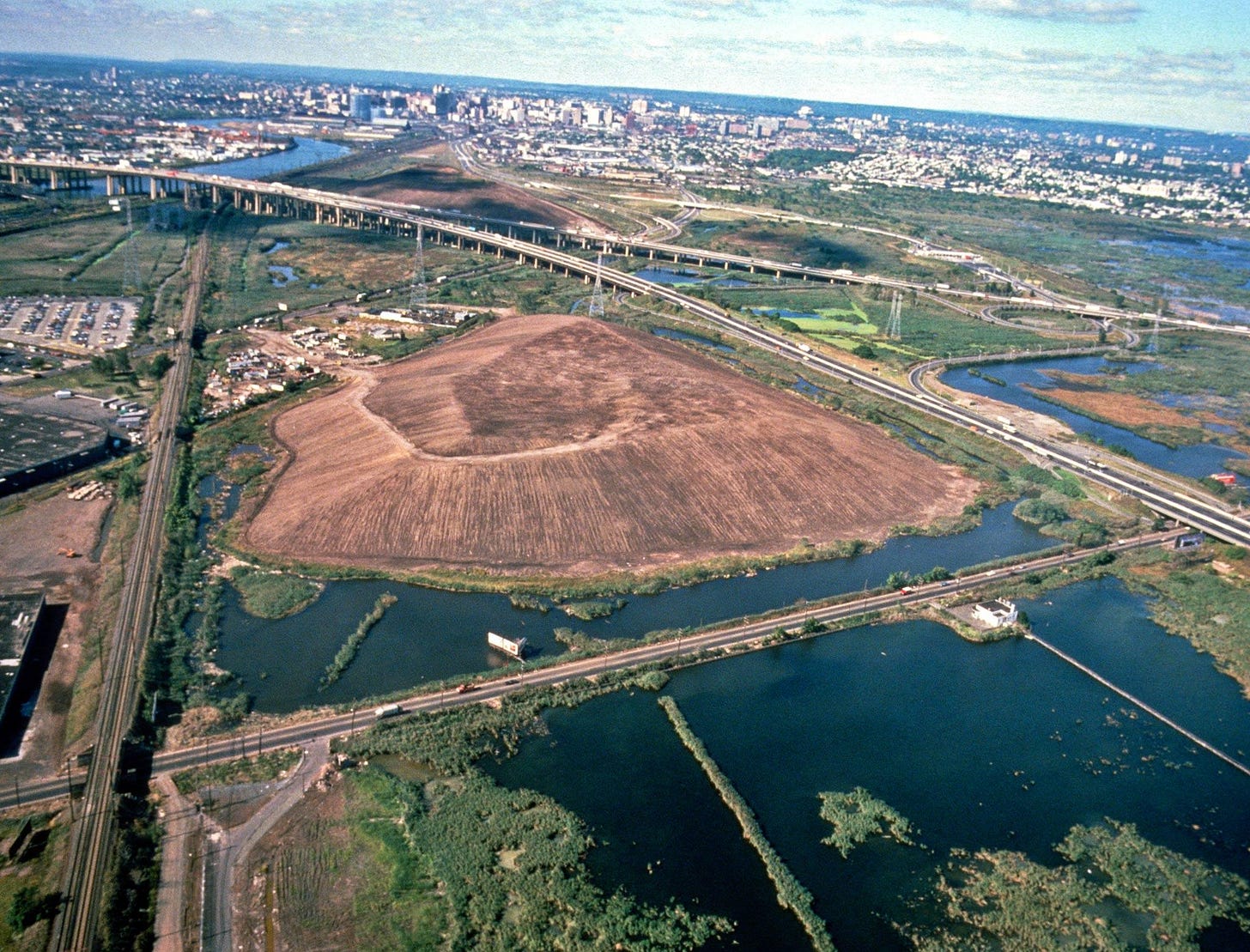
The Meadowlands prove to be a living testament to those places deemed undesirable, forgotten, or unworthy of our attention—elsewhere. Although you would never know from behind a steering wheel. Driving on the turnpike or from the seat of a bus, the marshy landscape looks so inaccessible and cold.
The land is the result of dated ways of thinking and being. Powerful proof of nature’s ability to regenerate and flourish despite centuries of environmental carnage. A walk in DeKorte Park reveals the truth of the Meadowlands. A softer side of the landscape, one that begs for preservation and careful attention.
I feel the push and pull of wishing to be both elsewhere and somewhere after walking the Meadowlands. My walks just outside the city are particularly sweet knowing I can return home when I please given public transit is available. New Jersey and the Meadowlands are my middle ground—my cherished elsewhere just right of the center. I look forward to the next visit.
Till then,
Alex
SUPPORT THIS NEWSLETTER
As always, this is Pedestrian, a newsletter on the observations, feelings, people, and experiences of walking through the built environment. If you’d like to support this work, please consider making a donation.




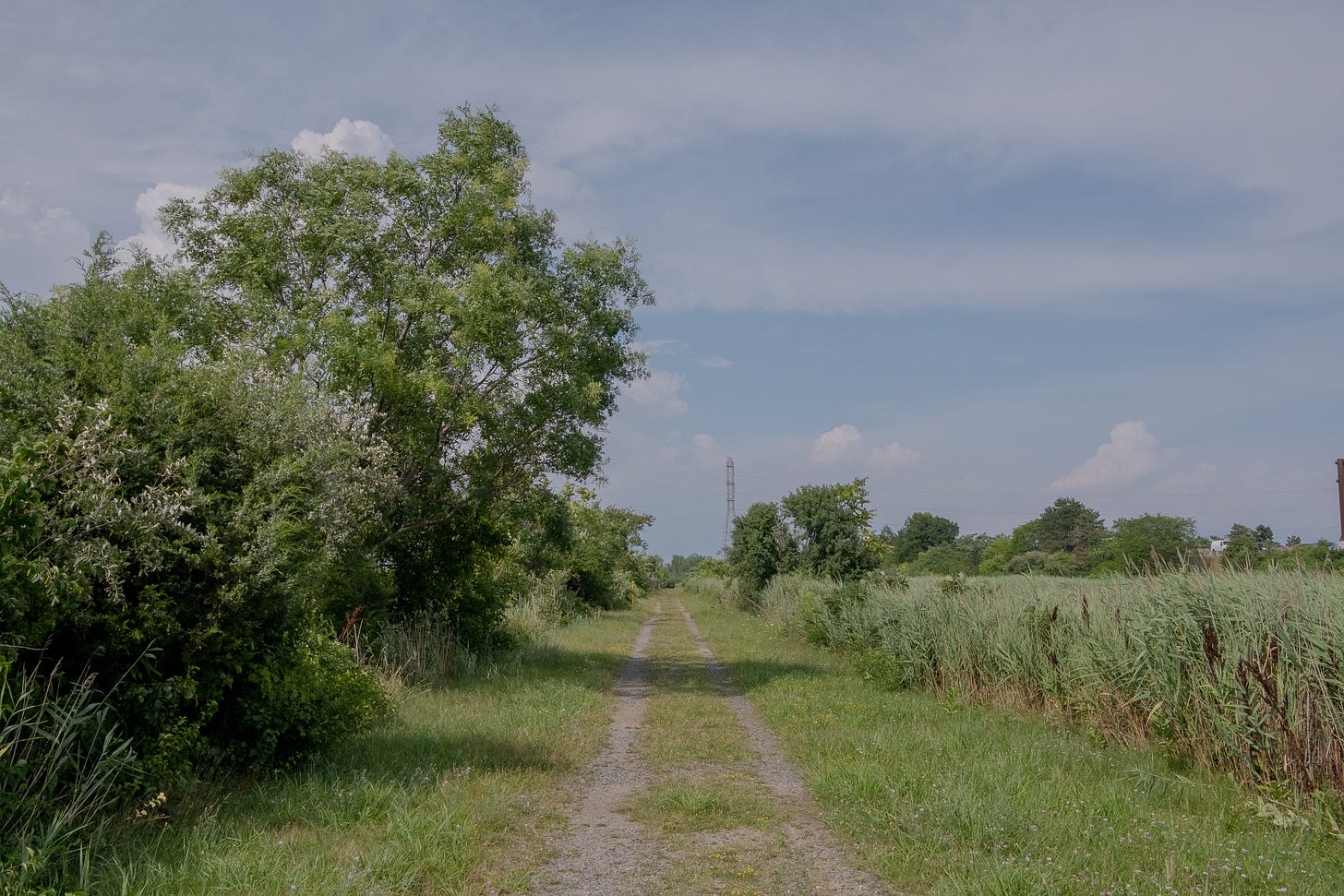
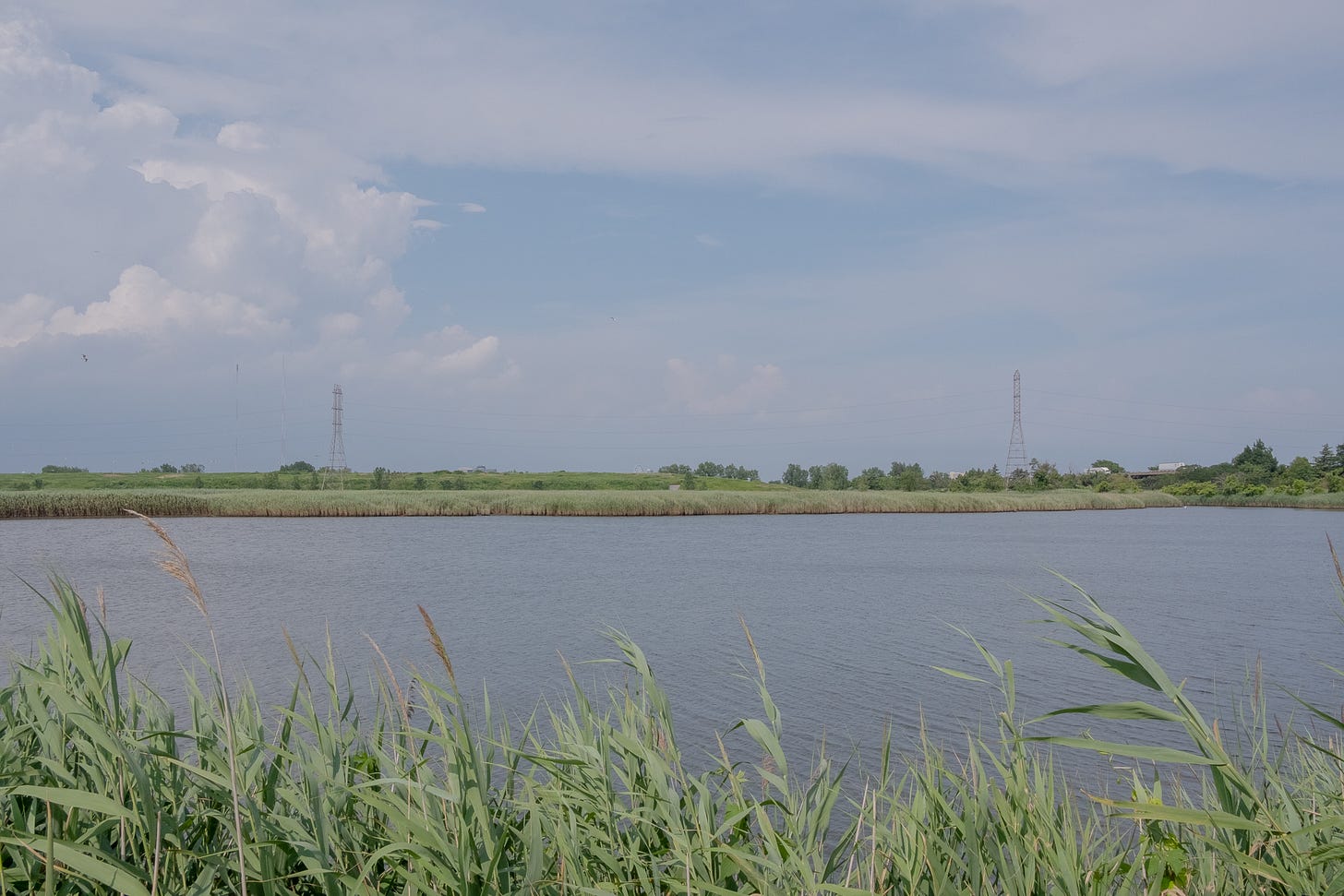
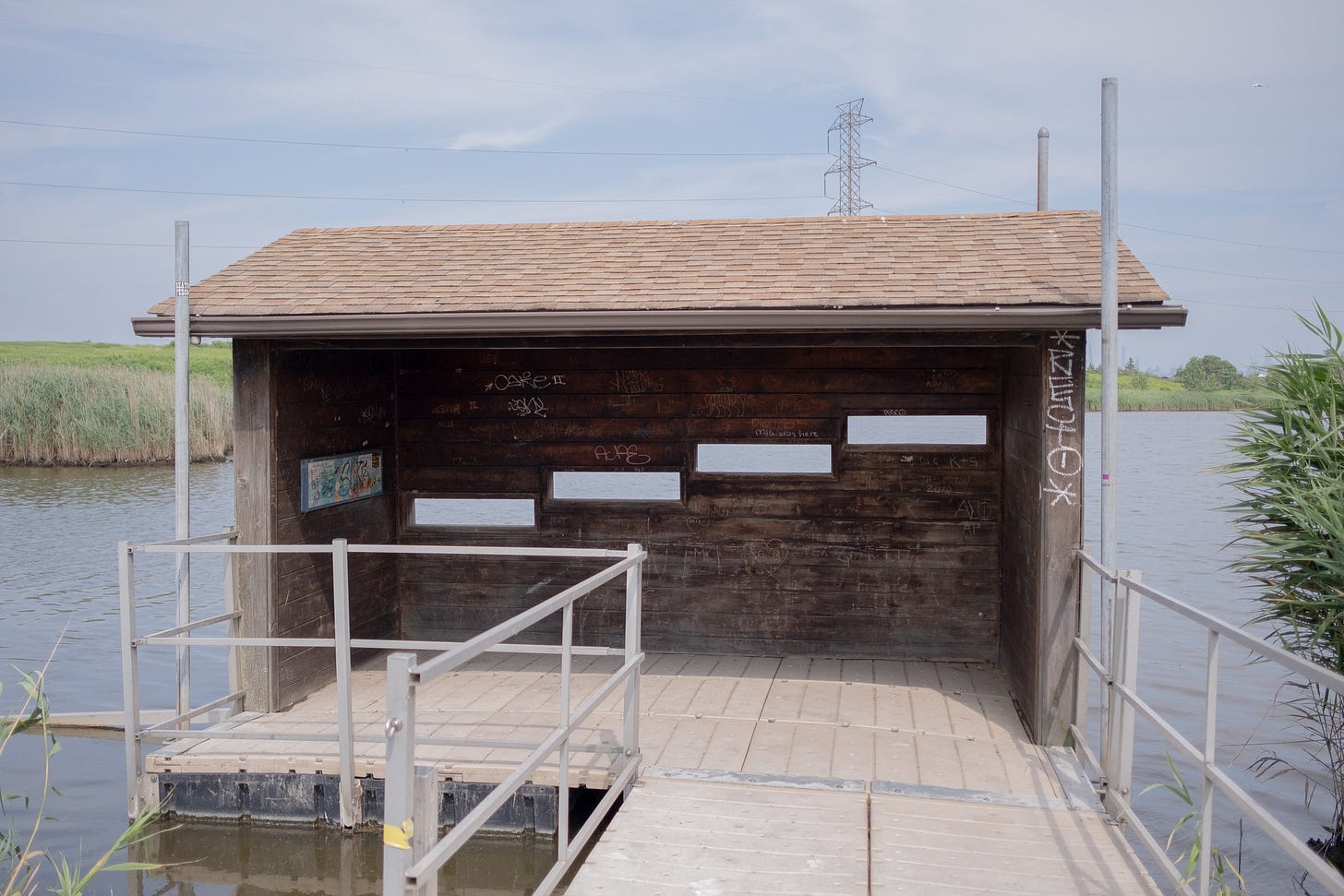
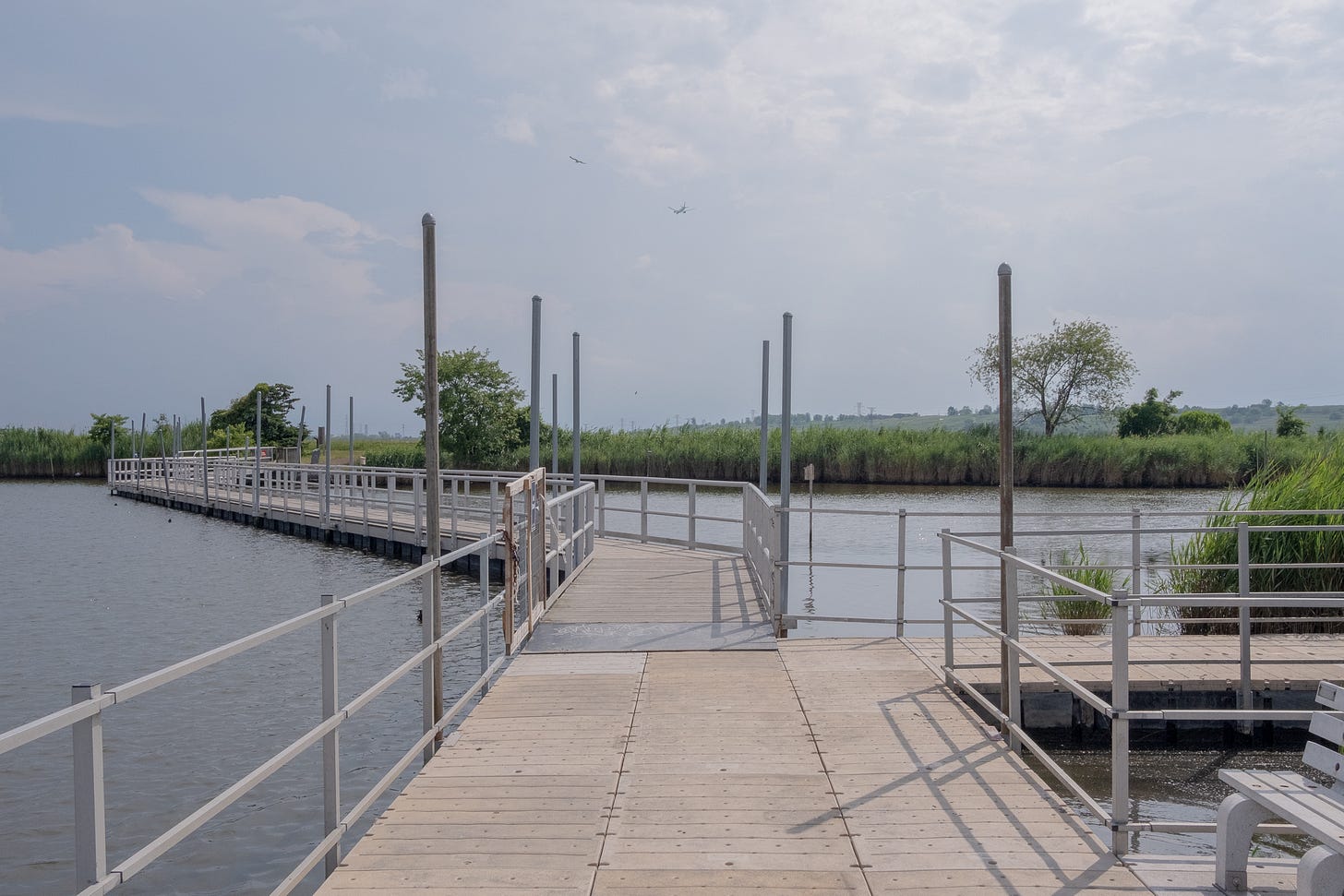
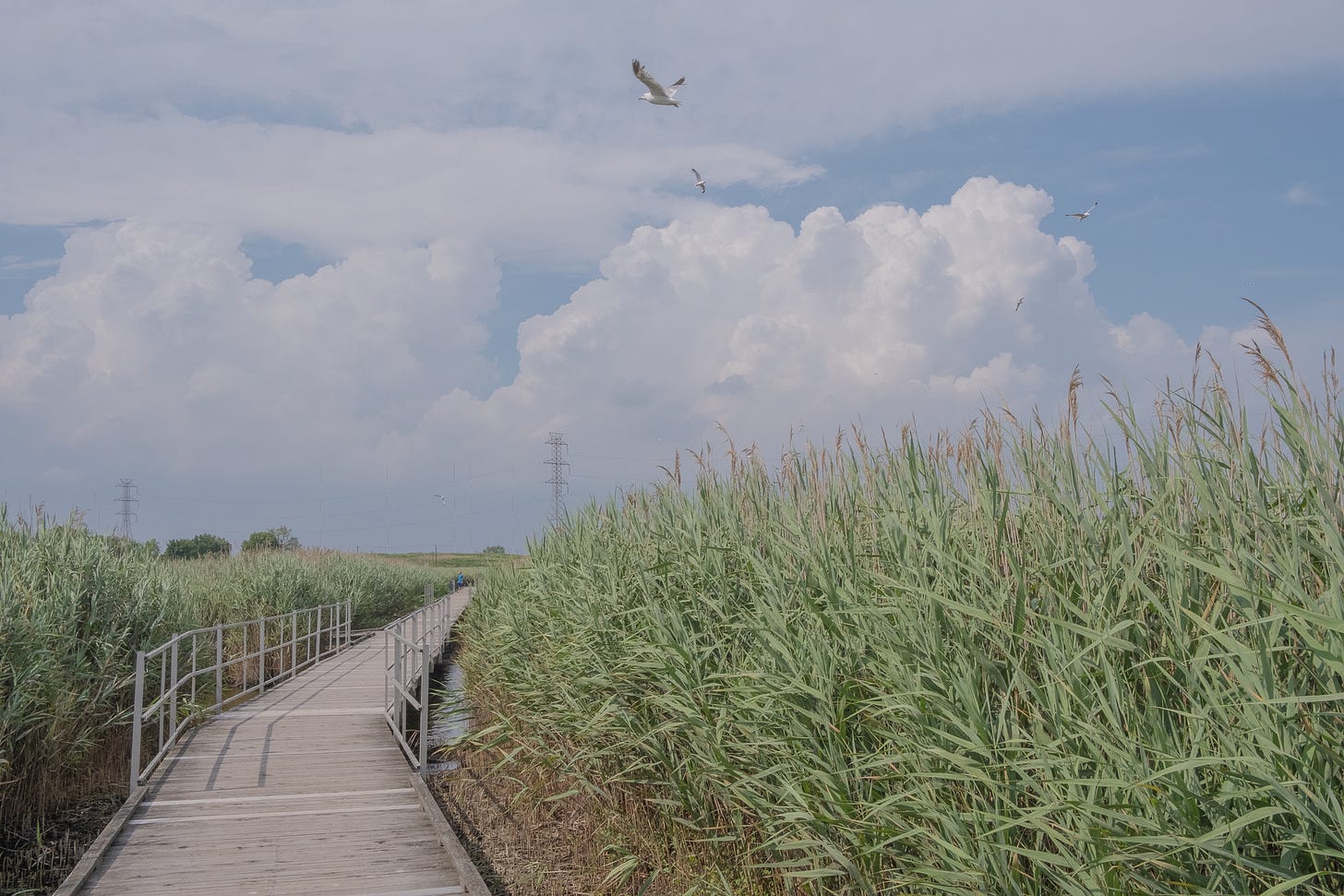
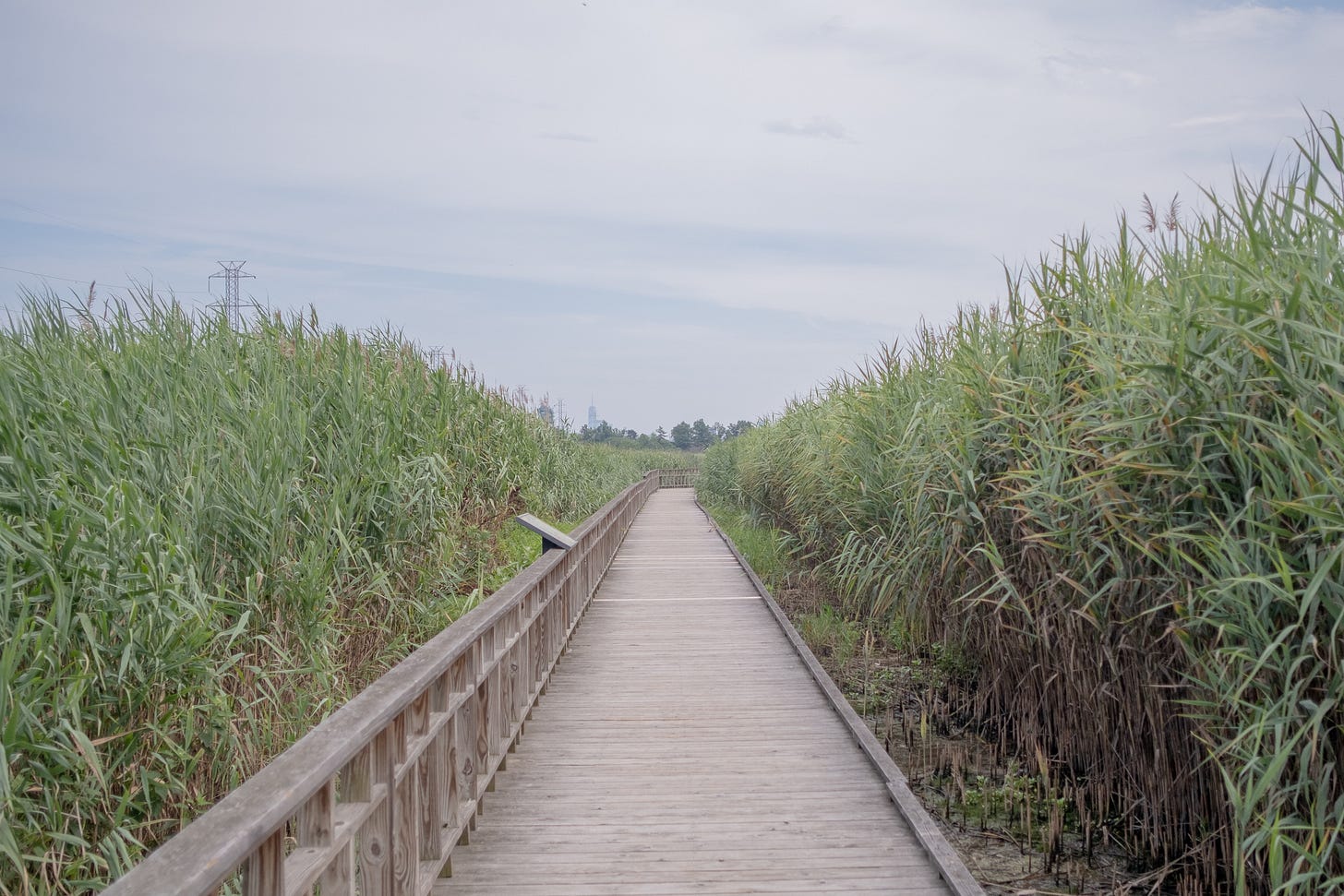
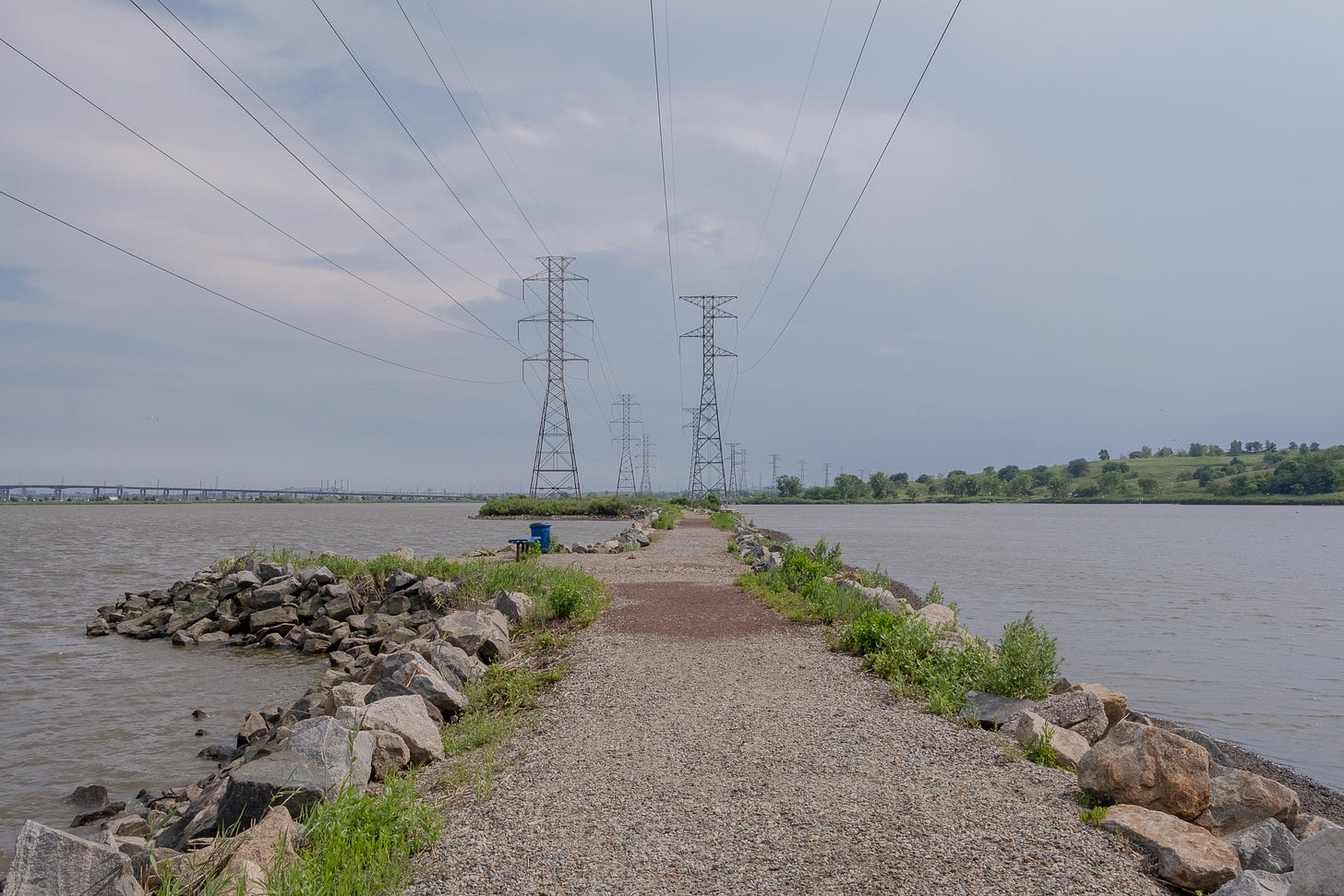

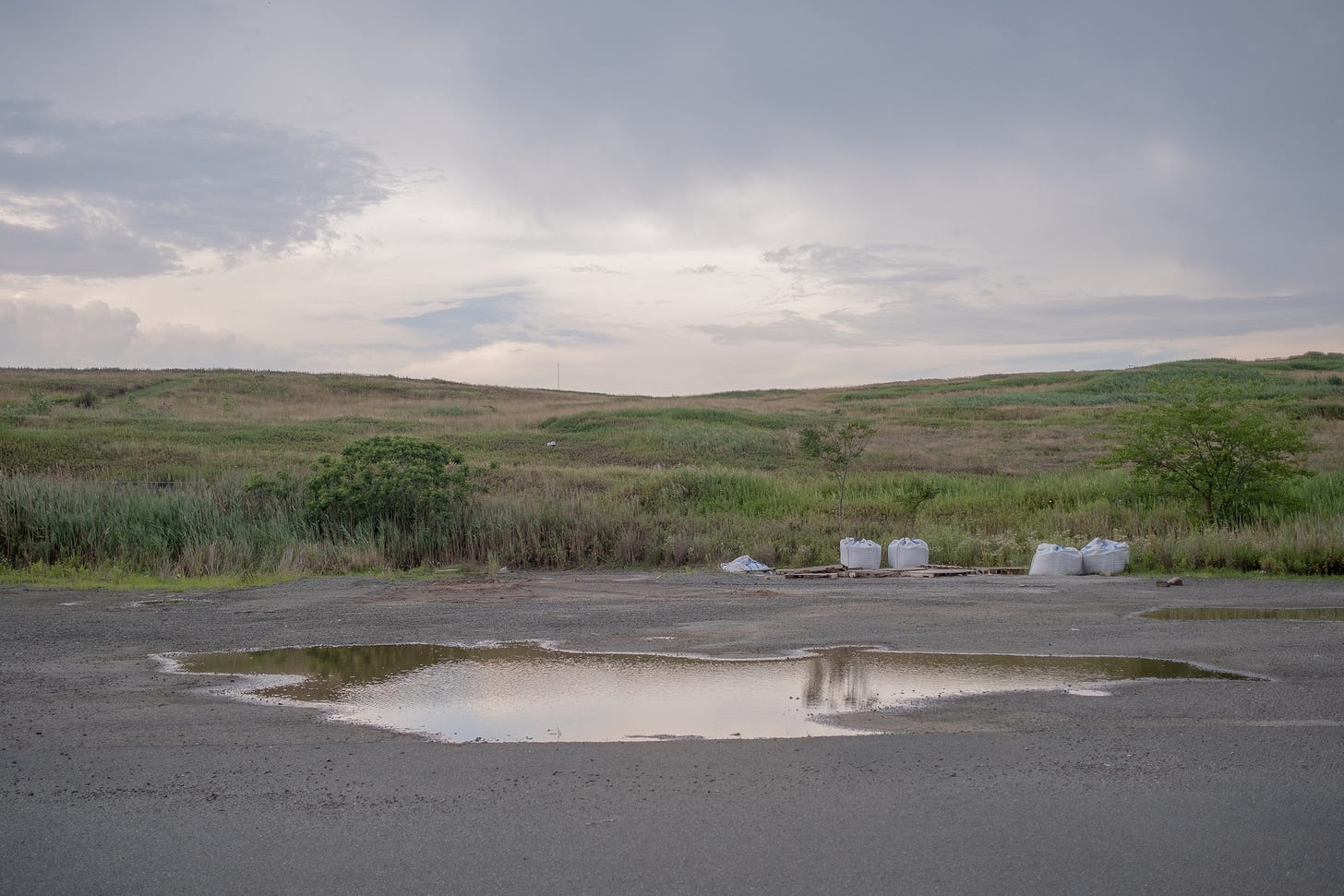
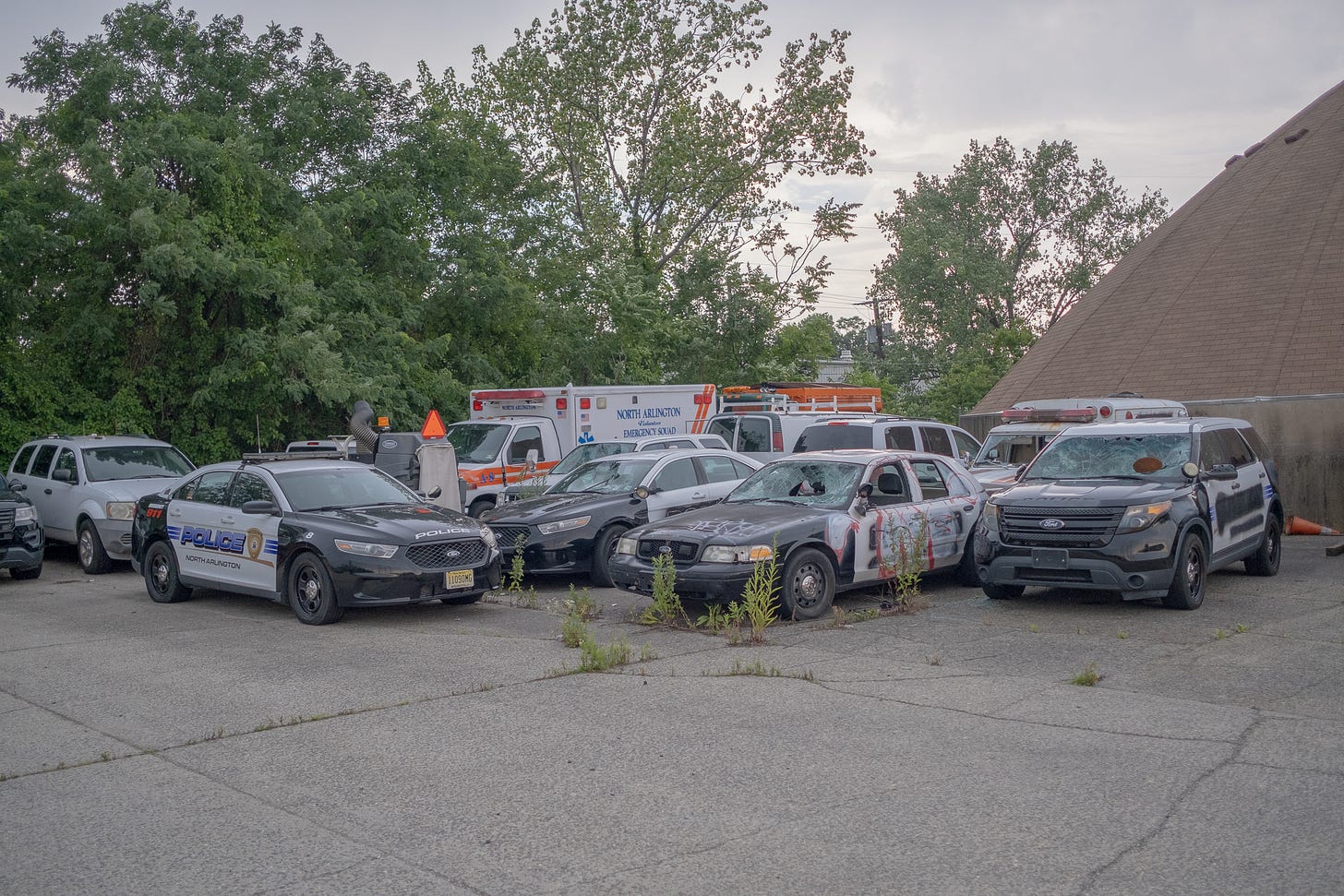
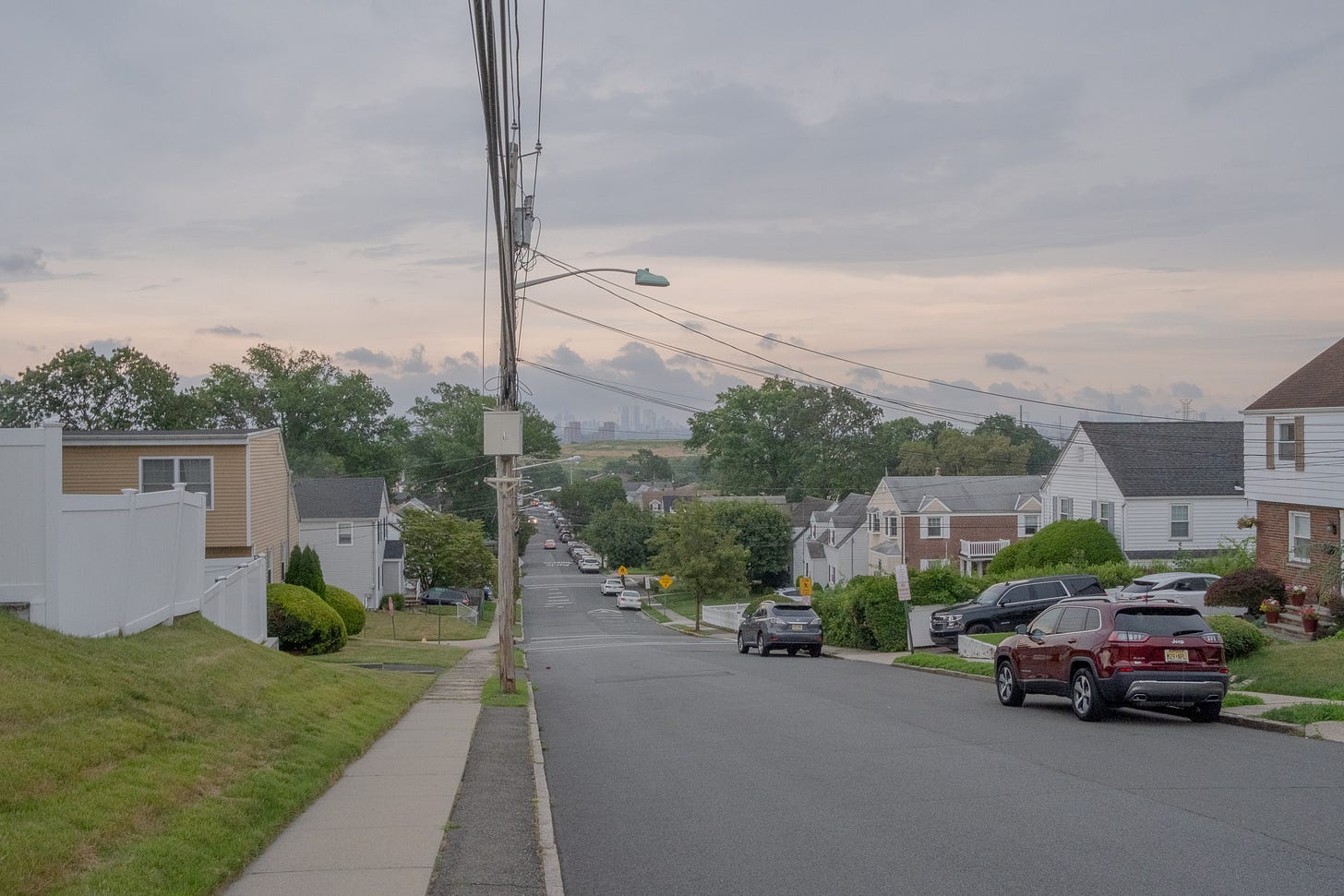
Great piece! Are you familiar with Ray Mortenson’s Meadowlands project? https://www.raymortenson.com/projects/meadowland